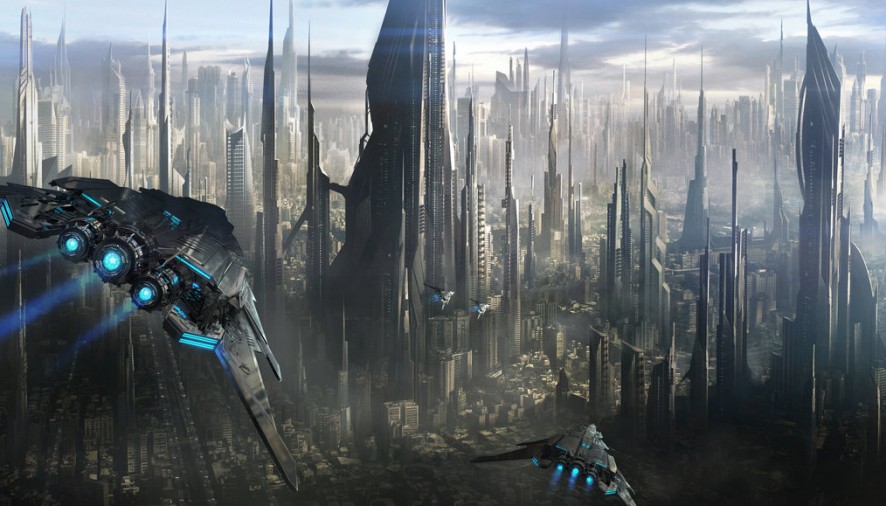We live in the future. This isn’t meant to be philosophical or grandiose; when you consider the incredible technological advances which have occurred over the last few decades the truth in that statement should be obvious. Some of the greatest Science Fiction stories have imagined technologies which were considered beyond the realm of possibility. Now scientists and innovators are either developing or have already developed many of these, once imaginary, inventions. The question is -how does science fiction compare to what we have in the modern era?
Would you like blonde hair or brown?
A Brave New World, by Aldous Huxley, imagines a world where nearly identical human embryos are conditioned, using artificial compounds to alter development, to create different classes of society. The result is a society of segregated classes which praises uniformity, predictability and consumption of disposable consumer goods. We may live in an age of consumerism but that is a discussion for another time. The most intriguing concept in of Huxley’s Brave New World is the control over physical and mental characteristics using a myriad of scientific approaches. Previously, the only medical advance which would be considered similar would be in vitro fertilisation (IVF). The process of IVF involves the fertilisation of an egg outside of the body. Currently, in the UK, IVF is strictly regulated and available only for those who fail to get pregnant after trying for over two years. However, the development of IVF has sparked the debate over designer or genetically modified babies. This is particular relevant as last week UK scientists have been given permission, by the fertility regulator, to genetically modify human embryos. This research aims to investigate the development cycle and understand the processes involved in miscarriages, infertility and IVF success rates. While altering the genetics of an embryo could theoretically allow the selection of characteristics such as sex, hair colour and eye colour, the steps required for that level of modifications are still a long way off. There are also regulations in place in preparation for this kind of development; for instance there is already a ban on selecting the sex when using IVF. So it is likely that if gene editing were to progress to the point where children could be genetically altered further regulations would be imposed. Hopefully, these regulations would help avoid the creation of a world which resembles Huxley’s Brave New World.
Come with me if you want artificial intelligence
A robot may not injure a human being or, through inaction, allow a human being to come to harm – The First Law of Robotics. The laws of robotics were conceived by Science Fiction writer Issac Assimov in his book I, Robot. Since then interest in robots and the development of artificial intelligence has increased, to the point it is quickly becoming a part of everyday life. When people hear the word “robot” some picture a loveable machine like Disney’s Wall-E, while others picture a Terminator style death machine; it depends on your perspective. Currently they still struggle to walk up the stairs confidently nonetheless automation is becoming a significant part of society. From vacuum cleans to self-driving cars, we are finding ways to automate almost every aspect of our lives. However, some would argue that these are merely stepping stones on the way to designing true artificial intelligence. The aim is to build a machine capable of exhibiting behaviour as skilfully and flexibly as a human can, as observed in last year’s film Ex Machina. Currently, it is still something we are striving to achieve but with the inventions of Siri, Microsoft’s Cortana and Google’s AlphaGo we are on our way to creating artificial intelligence. But I think we have a way to go before we reach the standard of Terminator or 2001: A Space Odysesy.
Space, the final frontier… for now.
Human curiosity is an incredible thing. From the early days of man stepping out of a cave to man’s first steps on the moon, the desire to know what is out there has driven us pretty far. The human race wants to explore space, this is only reinforced when you look at the history of Science Fiction; it’s one of the key plot points in many Sci-Fi stories. The technologies we currently use to explore space aren’t quiet as advanced as the faster than light or warp drives seen in Star Trek, yet some of the stuff we have achieved is just as incredible. It’s said that our phones have more technology than the entire Apollo mission and we still managed to navigate to the moon and back. The Apollo Guidance system relied on astronauts entering commands using pairs of nouns and verbs, and that alone was used to navigate the 952,700 miles round trip. Given they achieved a moon landing with that technology, it’s no surprise than with current technology our aspirations are significantly greater. NASA’s current plan is to land humans on an asteroid by 2025 and Mars in 2030. Likewise, private companies are now investing in space travel with Virgin Galactic now offering trips into space and the MarsOne group looking to establish a human settlement on Mars. These achievements may not directly compare to those in Interstellar or Galaxy Quest but these are the first steps. Who knows where we could end up, the universe is our oyster.
Steven Gibney
Image courtesy of Jonas de Ro, hosted on Wikipedia

